Chess is a domain of games played with chess pieces on an 8×8 board. Chess minigames comprise fewer pieces. Chess variants use the same starting point but with different rules.
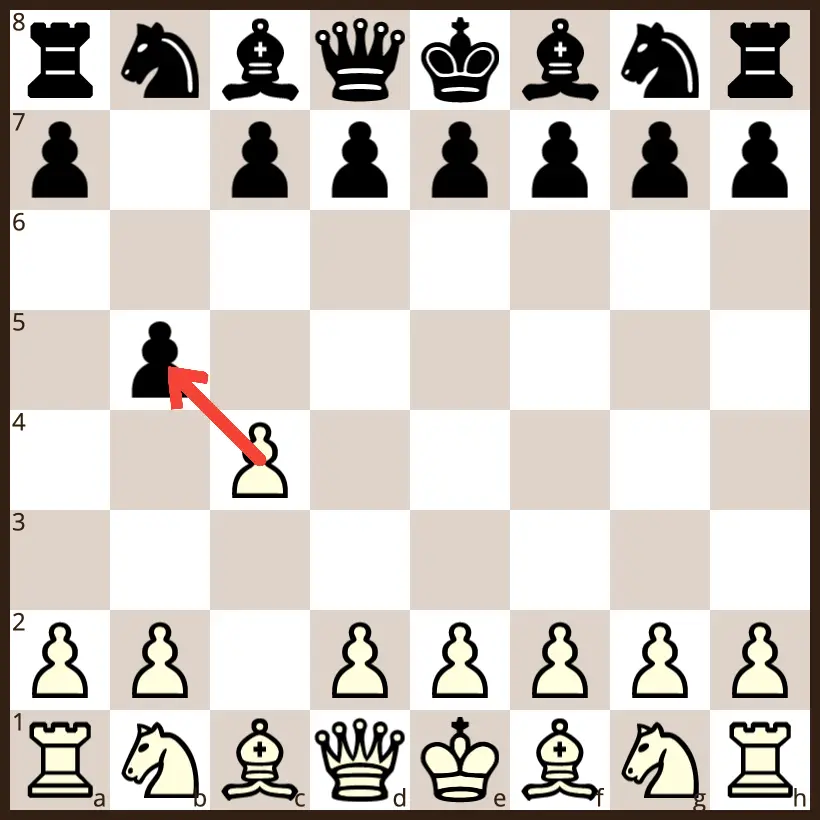
Loser's Chess
The purpose of this classic chess variant is to lose all your pieces. The king does not have any special status. If a capture is possible, then it is mandatory. If more than one capture is available, then you may choose which piece to capture. The game ends when one side has run out of all their pieces or when the next player has no moves, in which case the player with fewer pieces is the winner. In the diagram, after one move each, White must capture 2.c4 x b5.
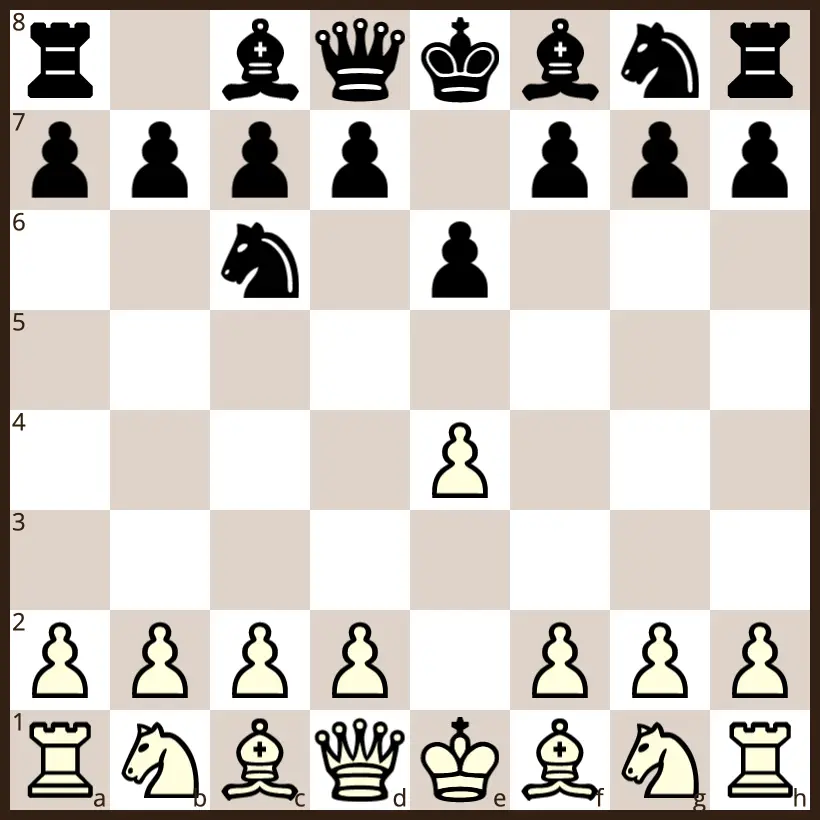
Progressive Chess
White plays a move, Black plays two moves, White plays three moves, and so on with a progression of increasing moves. Giving check ends a sequence. The purpose of this is to get checkmate. A simpler fun version is to capture all the opponent’s pieces (including the king).
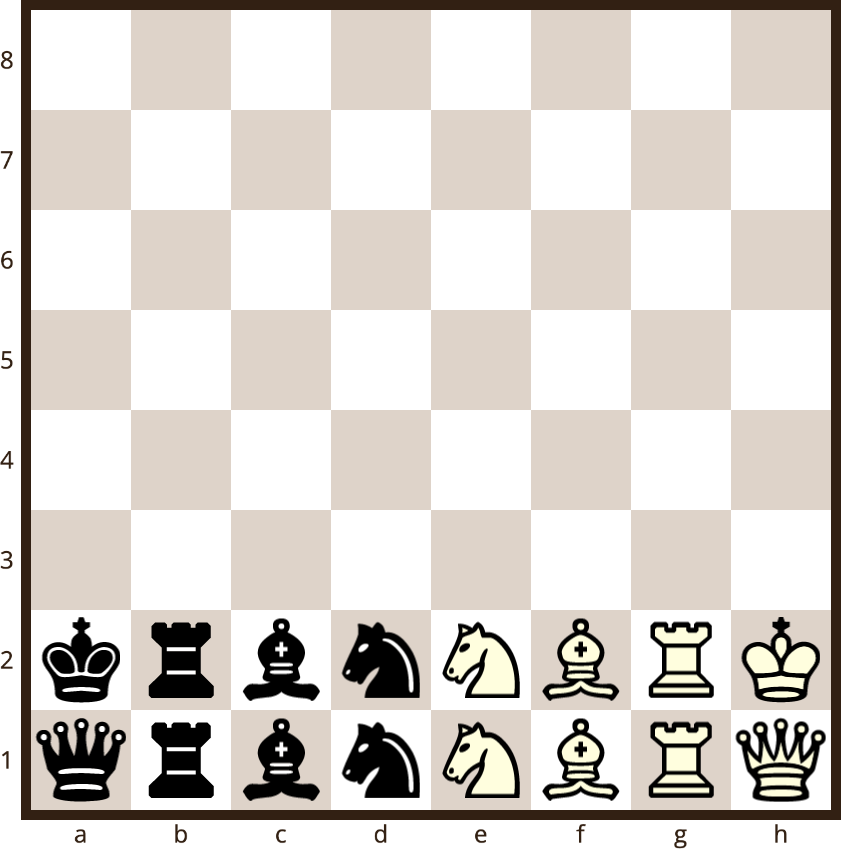
Racing Kings
Invented by Vernon R. Parton in 1961.
Both players sit on the same side. The winner is the first one to move their king to the opposite end. The standard chess moves apply with the exception that you are not allowed to attack the king and your king is not allowed to be attacked – in other words, no checks allowed.
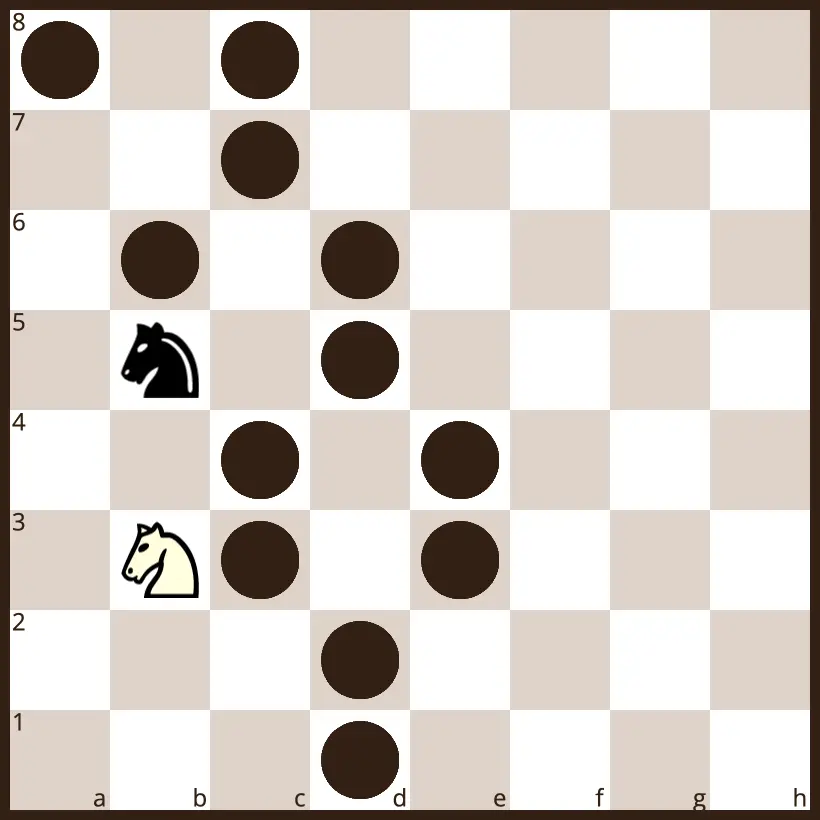
Joust
Each player controls a chess Knight (these are placed randomly at the beginning). Each move consists of a Knight’s move to an available square. Squares can only be visited once. So mark the square once the pieces has left. There are no captures. The loser is the first player unable to move. White starts. The illustration shows a position of a possible ongoing game.
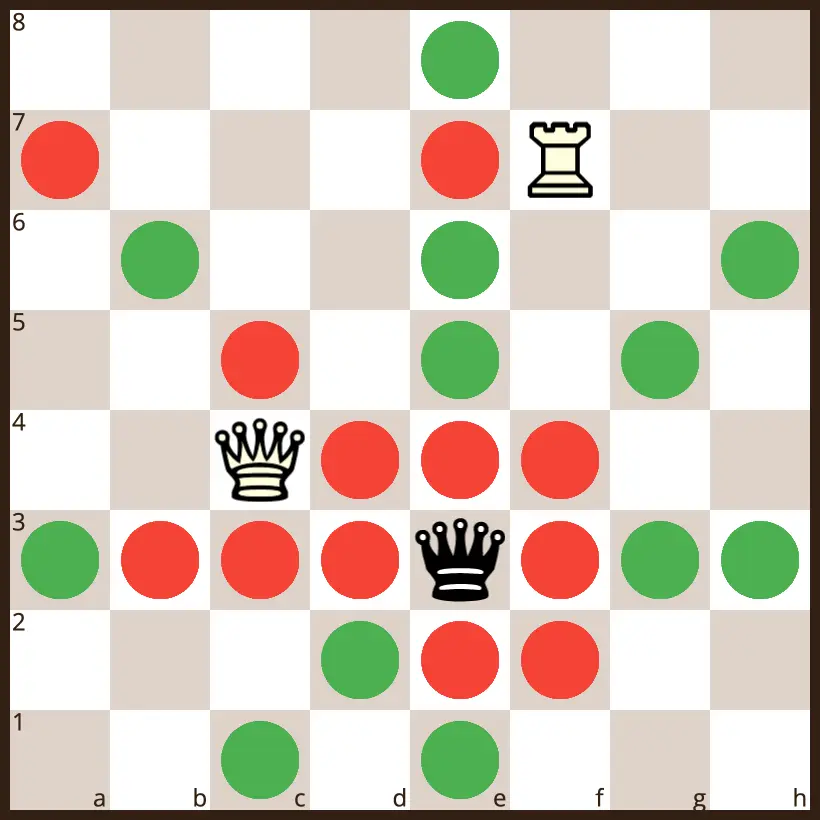
Interference
Invented by John Foley in 2014.
Starting with an empty board and a chess set, take turns to place a piece of your colour on a square where it is defended by your previously placed piece but not on a square attacked by the opponent. The winner is the last person to play. The diagram shows where Black can place its next piece (green) and cannot place its next piece (red).
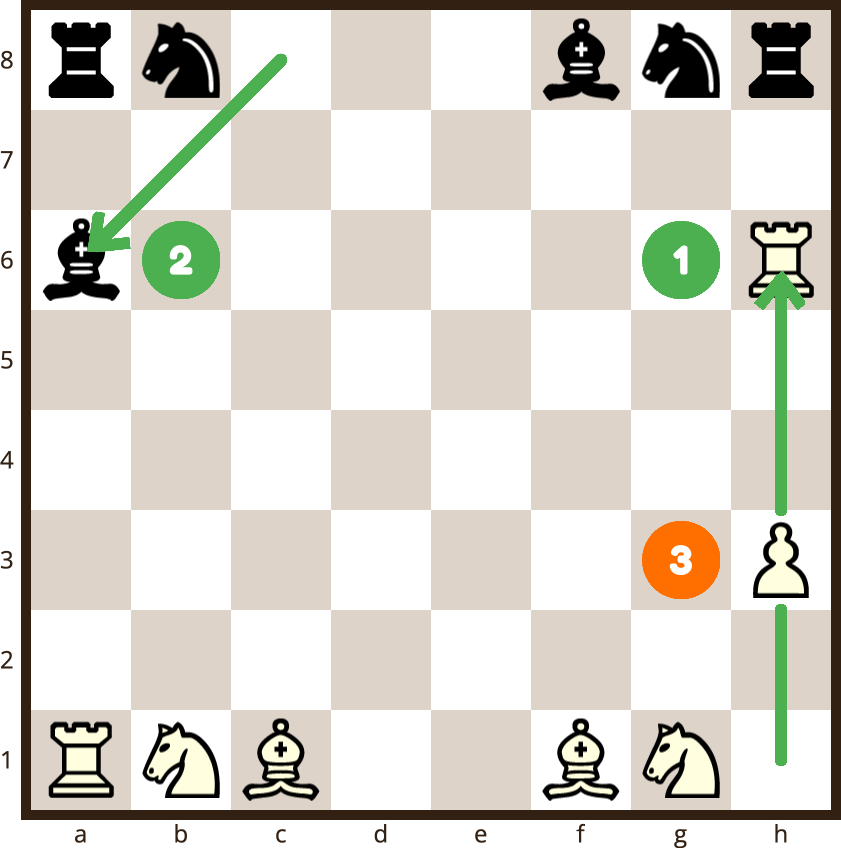
Folky
Invented by Petr Doubek (Czechia) in the 2000’s.
Folky combines the principles of chess and Go. The game is intended for all chess players and lovers of abstract board games who wish to test their combinational skills and imagination
The rooks, knights and bishops are placed on thier starting positions. Pawns are not on the board at the start. Pieces moves as in chess. There are no captures; pieces can only move to empty squares. Gameplay involves placing pawns on the board. A pawn can be placed only on an empty square targeted by at least three of your own pieces. Once placed, pawns cannot move, nor threaten any square – they are simply blockers. The winner is the first player to place all eight of their pawns on the board.
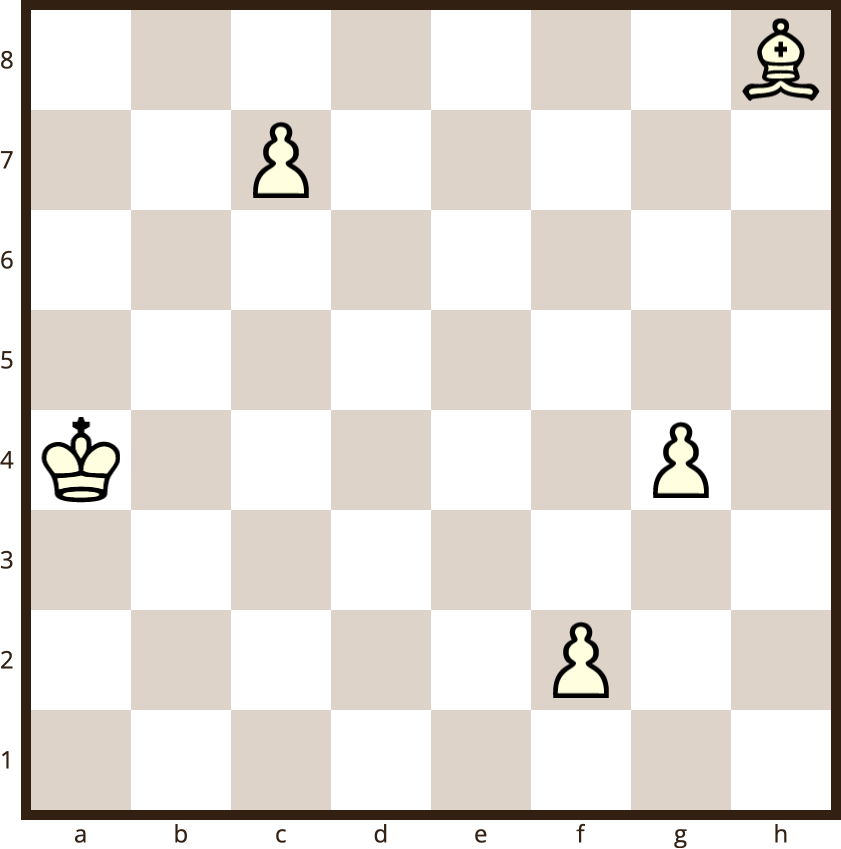
Kriegspiel
Invented by Michael Henry Temple in 1899.
This is the ultimate game of inference. You only see your pieces and so you need to deduce where your opponent pieces are. The two players are facing away from each other and, using a third board, a mediator informs them if their proposed moves are legal or if they are in check.